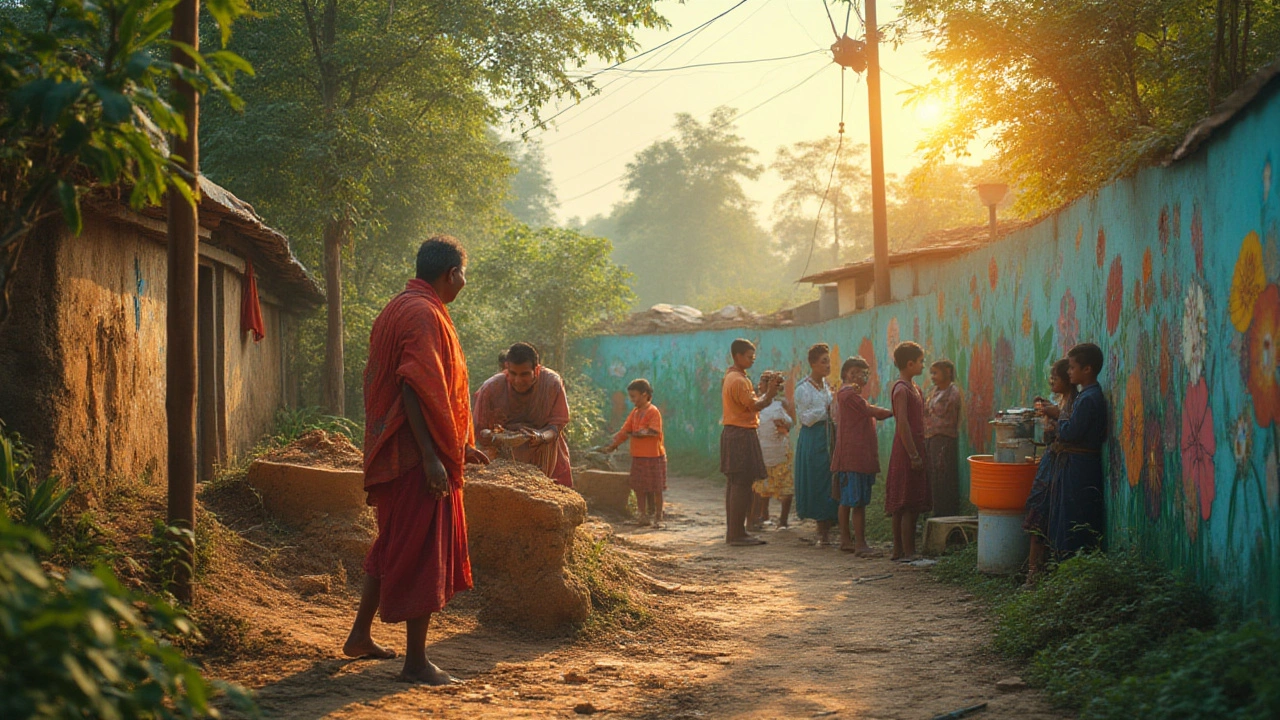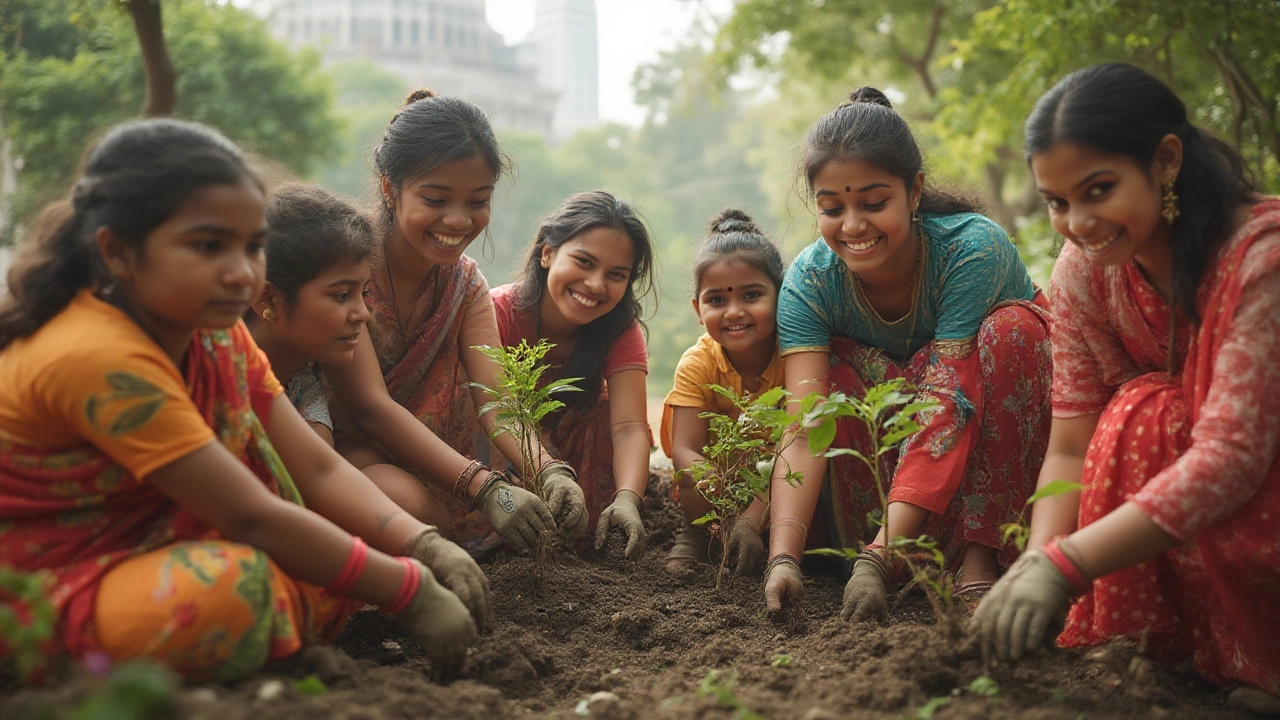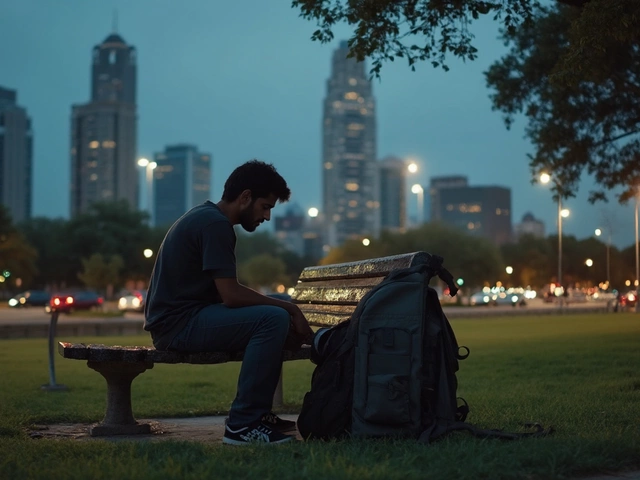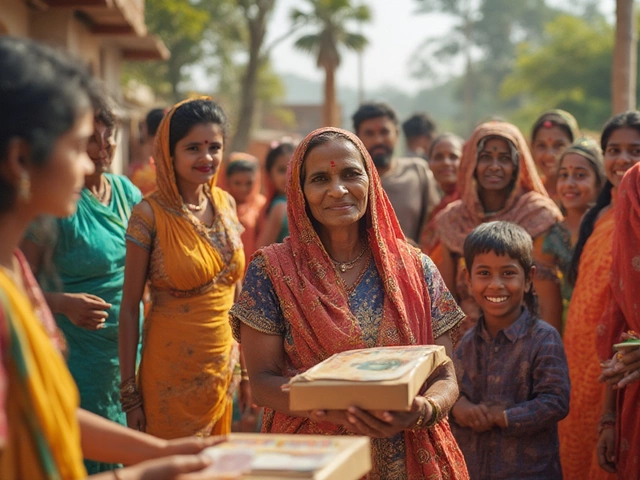The world’s not short on disasters or bad news, but here’s a bit that’s never boring: the wild, messy, life-saving work of a group that helps the environment. These organizations are out there hustling every day—planting forests, scrubbing beaches, lobbying leaders, dragging endangered birds out of harm’s way, and sometimes just picking up the plastic people forget. The best part? None of them are magical. They’re regular people, working together to undo the damage we’ve all helped cause. Ever wondered how they actually do it—or what a difference it really makes? Let’s go behind the green headlines.
What Makes an Environmental Group?
Start picturing an environmental group, and maybe Greenpeace’s ships chasing whalers come to mind, or a student recycling club sorting bottles after class. Big and small, flashy or low-key, what ties them all together? They’re united by a mission: help the planet and everything living on it. Most are nonprofits, which means they aren’t driven by profit, but by results—healthier air, clearer waters, and animals sticking around for more future generations to enjoy. A 2023 survey from the Global Environmental Organization Directory counts over 50,000 groups active worldwide, ranging from household names like World Wildlife Fund to tiny hyperlocal teams that exist only in their neighborhood.
These groups rarely work alone. Networks are everything. You’ll find alliances between scientists, business owners, teachers, Indigenous leaders, and artists. Each brings different tools to the fight. Some groups focus on research and policy, others do grassroots activism, some restore habitats, others educate kids, invent cleaner tech, or defend important species. The point: there isn’t one formula. If you want to get involved, odds are you can find a niche where your skills fit.
Many groups narrow their field. For example, Rainforest Action Network hounds big brands to drop bad supply chains. Surfrider Foundation runs clean-ups and campaigns to stop ocean pollution. Audubon Society looks after birds and their environments. Each one tends to specialize, because the environmental battlefield is massive. Want numbers? Check the table below for a snapshot of diverse major groups and what they tackle the most:
| Organization | Main Area | Estimated Volunteers | Founded Year |
|---|---|---|---|
| Greenpeace | Activism, Oceans, Forests | ~15,000 | 1971 |
| World Wildlife Fund | Wildlife Conservation | ~5,000 | 1961 |
| Friends of the Earth | Climate Policy | ~2,500 | 1969 |
| 350.org | Climate Action, Mobilization | ~3,000 | 2008 |
| Surfrider Foundation | Oceans, Beach Cleanups | ~6,000 | 1984 |
Don’t think you have to operate on a global scale. Local groups, like community gardens or neighborhood clean-up crews, punch above their weight. A team of 20 local riverkeepers can pick up thousands of pounds of trash in a single year. That’s not hypothetical. The Mississippi River Cities & Towns Initiative, for example, organizes volunteers from over 100 towns, and they’ve reported collecting more than 430 tons of river litter since 2015. Size doesn’t always matter—it’s the passion.
How Environmental Groups Tackle Problems
If you think it’s all tree-hugging and protests, get ready to be surprised. Most environmental groups split their projects into three main routes: activism, action, and advocacy. No, they’re not just different spellings.
- Action: This is about getting hands dirty. Think reforestation, creek clean-ups, removing invasive plants, or building wildlife safe zones. The Nature Conservancy is famous for buying chunks of land to restore habitats. On their preserves, volunteers might spend weekends replanting prairie grasses or tracking native species. My friend Chelsea spent last summer tagging frogs in restored wetlands near Chicago. She described it like a cross between science class and a never-ending game of hide-and-seek—except with actual stakes for the frogs.
- Advocacy: Some groups put pressure on leaders to pass laws or ban harmful practices. Environmental Defense Fund, for example, uses policy expertise to push for limits on toxic chemicals or promote renewable energy credits. They’ll meet with lawmakers, testify at hearings, and whip up science-backed petitions.
- Activism: Expect photo-worthy moments. Members organize rallies, stage direct actions, or use online campaigns to make people (and companies) take notice. Ever seen those banner drops from bridges or heard about folks chaining themselves to pipelines? That’s one powerful tool in the environmental toolkit, often led by groups like Extinction Rebellion, who specialize in making causes impossible to ignore.
Plenty of groups mix and match. 350.org manages massive climate marches around the globe—seriously, their September 2019 event drew an estimated 7.6 million people. Yet they also run educational webinars and develop city-focused climate plans. Versatility is key, since climate change is a moving target. You adapt, or you get left behind.
Not every win gets a headline. Ecosystem restoration, for example, is slow. It can take 10 years for a reforested field to resemble anything close to a native forest. Still, the change stacks up. A 2021 report by the UN Environment Programme found that restoration projects launched by collective groups have restored over 18 million hectares of degraded land worldwide since 2000—that’s land the size of Cambodia suddenly back in business for wildlife, farming, and clean water. Small actions by local groups, multiplied across the planet, become something huge.

Interesting Facts You Probably Didn’t Know
Most people don’t realize how creative—and sometimes downright surprising—these groups can get. For instance, in 2022, volunteers with Sea Shepherd Conservation Society used drones to track illegal fishing in the Mediterranean and alert authorities in real time. It’s like a mashup of eco-defenders and spy tech.
You might think environmentalists are all young college grads, but here’s the twist—retirees are one of the fastest-growing segments of environment volunteers. Many have extra time and want to leave the world better than they found it. One UK-based study in 2023 showed that local environmental teams with more people over 60 completed 25% more projects than youth-dominated groups, partly because they stick around and bring decades of know-how.
Fundraising matters, too. The charity WaterAid runs quirky public “walk for water” events where volunteers carry heavy water buckets to visualize the daily reality for people without clean water sources. It’s a small, clever way to combine fundraising and awareness in one go. These events have funded water projects reaching over 28 million people by 2024. That’s clever outreach with measurable impact.
And here’s a wild one: in Kenya, the Green Belt Movement has planted over 51 million trees since 1977, started by Nobel laureate Wangari Maathai. Their efforts have transformed eroded hillsides, empowered thousands of women as eco-leaders, and inspired copycat programs on almost every continent.
How To Join or Support an Environmental Group
Maybe reading about all this action makes you want to jump in. Good news—it doesn’t take a science degree or a fat bank account to chip in. The simplest way to help? Show up for a weekend volunteer event. Whether it’s as tiny as picking up cigarette butts off a bike path or as organized as planting 10,000 trees, showing up matters. If you’re more of a behind-the-scenes type, lots of groups need people for admin tasks, newsletter writing, or tech support. There’s something for everyone.
If you prefer donating, even small gifts add up. Most US-based groups make it easy: one-off gifts, monthly pledges, or even rounding up purchases through apps. If budgets are tight, consider non-cash support. Many groups need used gear, like old binoculars for bird-watchers or waders for wetland teams. Big environmental wins often hinge on random acts of generosity.
Have skills? Lend them. Got graphic design chops? Offer to make event flyers. Social media whiz? Help boost campaigns. Engineers can design renewable water pumps; lawyers can help fight polluters in court; artists create murals that tell powerful stories. People forget: the best work often comes from everyday talents applied to eco-problems.
And don’t skip the most obvious tip—your own habits. Supporting a group is fantastic, but reducing your single-use plastics, reusing, recycling, and talking openly about environmental issues multiplies your impact. Start small, but start now. If you want to find a group: try doing a quick web search for “environmental volunteer” and your city, or check platforms like VolunteerMatch and Idealist. You can find listings by activity, age group, and commitment level.
- Reach out directly via their official website or social.
- Sign up for newsletters and watch for event calls.
- Invite friends—everything’s better with backup.
- Keep it regular. Monthly is more helpful than once-and-done.
Many large organizations also run chapters in schools, workplaces, and even online, so if you’re rural or busy, there are options. Our family got involved with a local creek revival last year—Griffin thought it would be dirty, hard labor, but it’s usually an excuse for everyone to hang out, share snacks, and gossip while helping nature. Sometimes my teenage niece brings her classmates and they treat it like a social club. It’s a win for everyone.

Challenges and Controversy: What’s Stopping Progress?
Helping the planet isn’t always sunshine and fresh air. There are plenty of bumps in the road, and it’s a mistake to sugarcoat them. First off, funding is always a battle. Most groups—especially small locals—run on tight budgets. They compete for grants, donors, and sometimes must get creative with fundraising. If you see a bake sale for "Turtles and Wetlands," don’t laugh—it’s probably financing real protection for local critters.
Red tape and politics often slow things down. Environmental work can cross a lot of boundaries—municipal, state, national—and rules don’t always make sense. Even good projects face delays or opposition if local leaders fear it might upset voters or business interests. Some polluting companies fight back hard, pouring money into legal blockades or PR campaigns to muddy evidence. In the US, a 2024 investigation found over $30 million spent on anti-environmental lobbying by oil and gas firms—just since 2021.
Not every group gets along, either. Philosophical splits—say, between pro-renewable-energy advocates and conservation purists—sometimes erupt into fierce debates about what’s best for the landscape. These aren’t just shouting matches: the direction (and success) of projects can hinge on finding common ground. When groups collaborate, lessons learned are incredible. When they argue, work can stall for months.
Let’s not forget burnout. Environmental activists and volunteers tire out, fast. The work is urgent, and victories often feel too slow. Some groups have started building mental health breaks into their volunteer programs, with retreats, peer support, or rotating responsibilities. Studies from the American Psychological Association indicate that regular debriefs and social support reduce attrition by 40% among conservation volunteers.
Finally, there’s the constant struggle to stay relevant. Climate science evolves. Regulations change. Public interest shifts with every weather event. Successful groups are nimble. They pivot from plastic bans to wildfire prevention, wetlands defense to renewable energy campaigns. If one strategy doesn’t work, they try the next thing. That’s the wild, sometimes frustrating, always inspiring heart of what makes a group that helps the environment. It’s teamwork, on a planet-sized scale—not perfect, but powerful.





